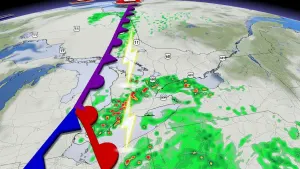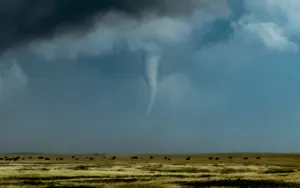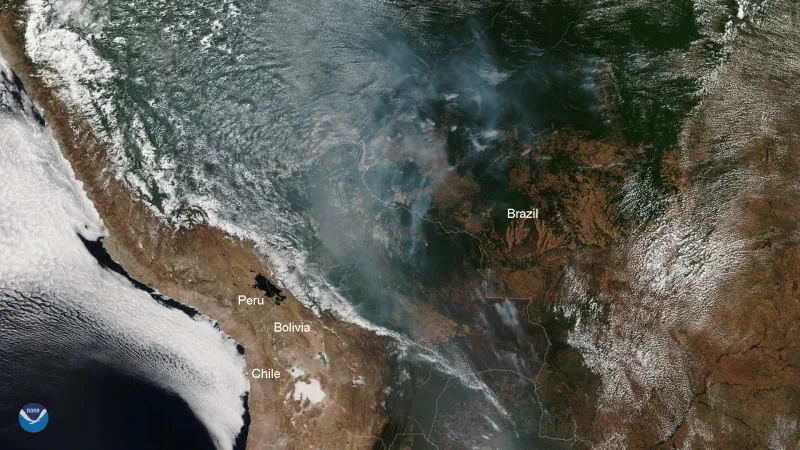
Record number of wildfires are burning in the Amazon rainforest
The rate of burning in the rainforest is equivalent to losing approximately 1.5 soccer fields per minute.
It's not unusual to see some wildfires spreading across the Amazon rainforest every year, but this year, and especially throughout the month of August, we’ve seen an exceptional number of fires.
Up 83 per cent from 2018, Brazil’s National Institute for Space Research (NIPE) has already spotted close to 73,000 fires since January. Since the middle of August, the agency has counted close to 10,000 of fires burning across different areas of the largest rainforest on Earth. The rate at which this is occurring is equivalent to about one and a half soccer fields per minute.
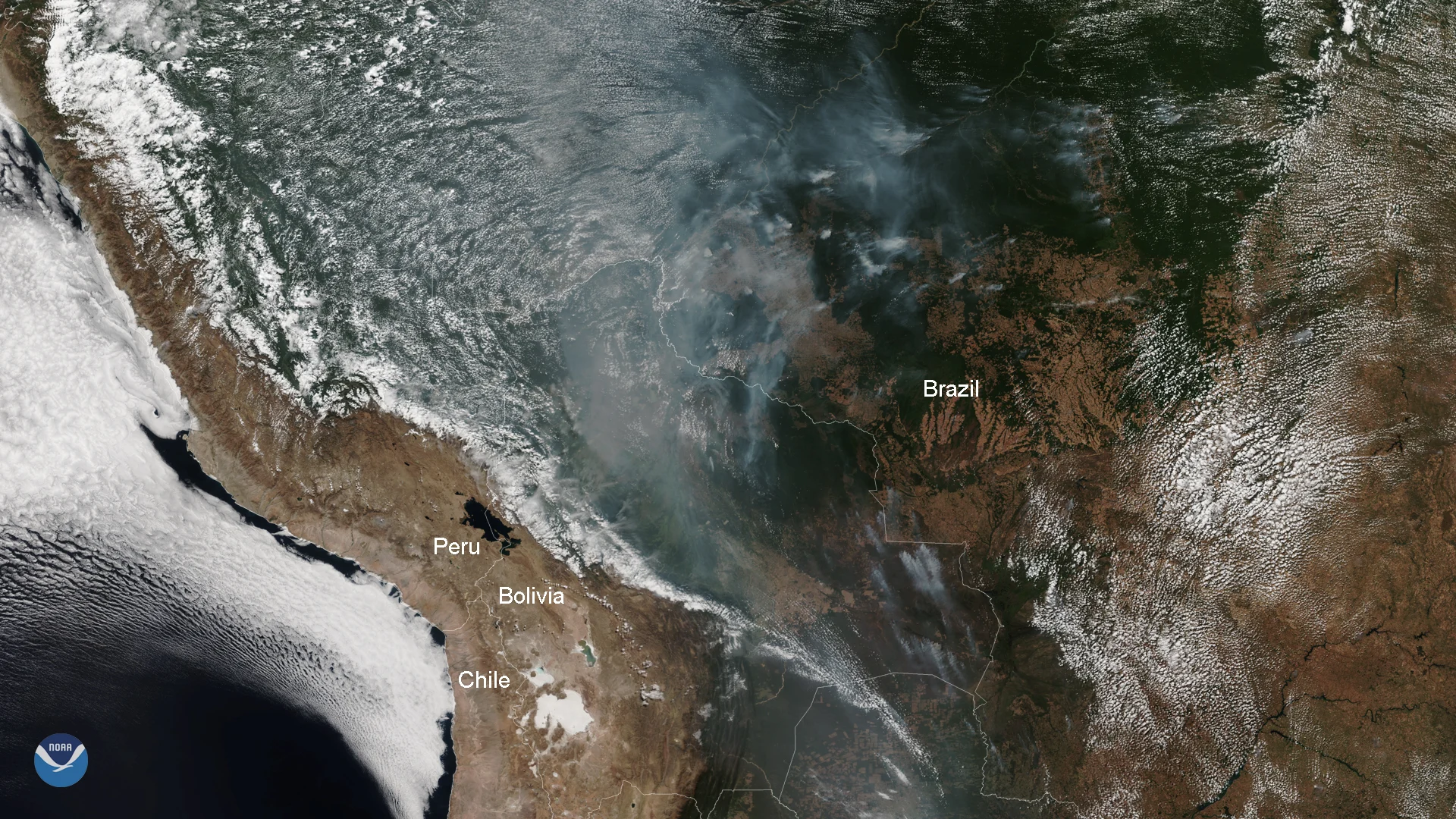
A satellite image of the wildfires in Brazil. Credit: NOAA MODIS
The smoke produced by these multiple wildfires is clearly visible from space, as seen in some of the images captured by NASA’s MODIS aboard the Aqua satellite. Although wildfires in the Amazon region are not unusual, it is, however, unusual to see them throughout the year because persistent wet weather prevents them from starting and propagating.
July and August, the drier months, tend to favour fires, mainly due to farmland pasture clearing and deforestation. The peak period for these “controlled” fires usually occurs in September and October. This year, despite having near normal precipitation across the region, with no significant drought occuring, the situation has taken a turn for the worse early in the season.
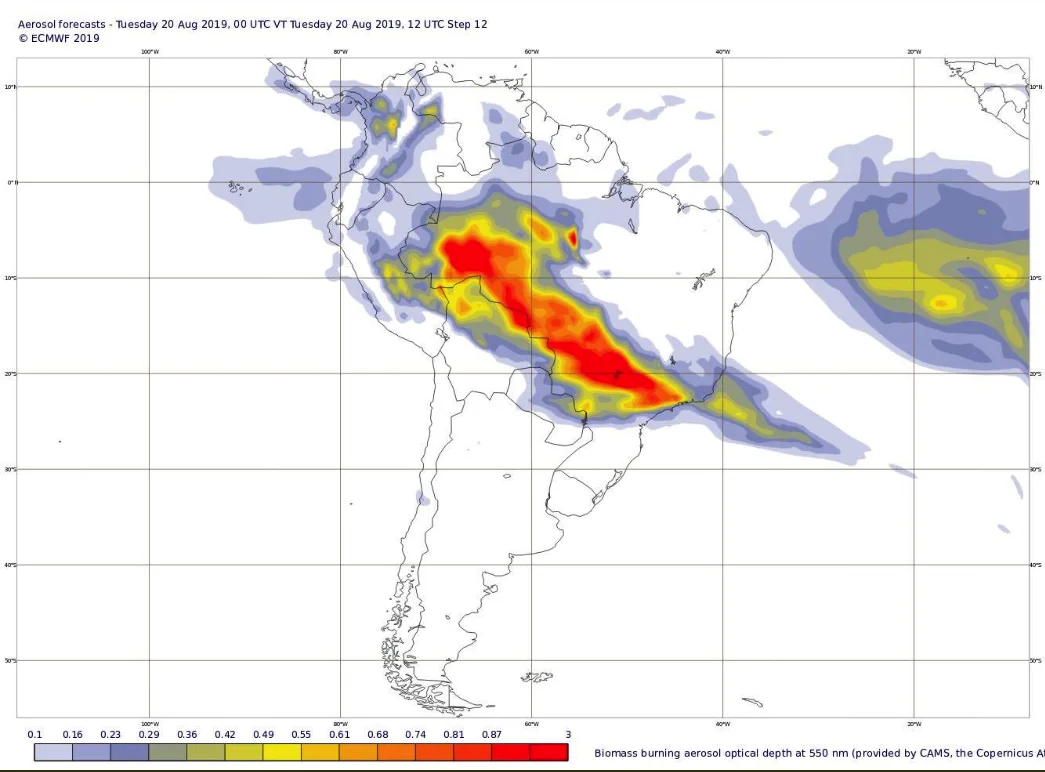
Aerosol forecast from burning biomass. Credit: ECMWF
Smoke from the forest fires has been spreading southeast and will continue to do so as forecasted by the European ECMWF model. Small villages, but also some of the largest urban areas in the world like Sao Paulo, have already been dealing with a high concentration of aerosols during the last few days.
Respiratory problems among the population in areas affected by the smoke have been on the rise, and some states like Amazonas have declared a state of emergency for its capital, Manaus.
The accelerated and extensive burning of the Amazon rainforest this month means less vegetation will be available in the region to take in rising concentrations of carbon dioxide from the atmosphere. Also, much of the combustion of those trees and plants that have been burning release additional carbon dioxide into the atmosphere, a key element that amplifies the Earth’s greenhouse effect.
Beyond the scope of the current wildfire scenario taking place in Brazil, a recent study led by Geographers from Leeds University in the United Kingdom confirms that the Amazon rainforest, which covers a staggering 550 million hectares, is losing its ability to soak up carbon dioxide from the air. Since the turn of the century, trees in the Amazon have been dying at an increasing rate, rendering the massive jungle a weaker absorber, or “sink,” of CO2, which plants take up during photosynthesis.

Researchers hypothesize that one possible reason for the rising tree mortality is a paradoxical effect of the higher concentration of CO2 in the air, which generally encourages tree growth. Yes, trees in the forest are growing faster, but faster growth makes the trees die younger because they are more vulnerable to diseases. This finding comes to show the unpredictability of the effects of climate change and a warming planet.
What we do know, is that forests play a crucial role in maintaining the global carbon budget. Worldwide, they suck up 2.4 billion metric tons of carbon each year, and the massive Amazon Rainforest alone absorbs about a quarter of that total.








